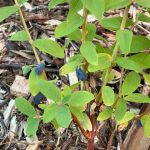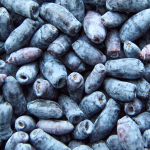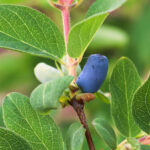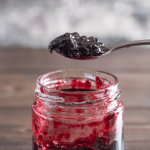Indoor Haskap Care: Adapting to Early Frosts and Sudden Growth
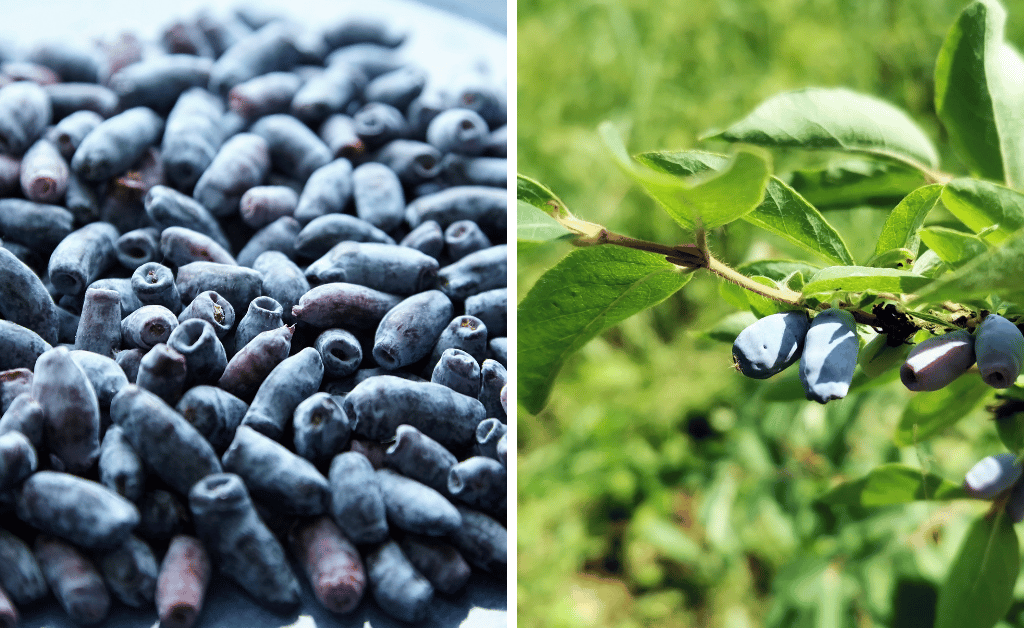
In the realm of hardy fruit-bearing shrubs, the Haskap (Lonicera caerulea), also known as blue honeysuckle or honeyberry, stands out for its robustness and the sweet, tangy berries it produces. These deciduous plants have garnered attention not only for their delicious fruit but also for their resilience in cold climates. However, even the sturdiest of plants can be caught off guard by the whims of weather, particularly when early frosts threaten their survival.
Gardeners familiar with Haskaps might expect these plants to enter a period of dormancy as temperatures drop, preparing for a quiescent winter. But what happens when the plants are faced with unseasonably warm temperatures that prompt untimely growth, only to be followed by a sudden plunge into freezing conditions? This scenario poses a significant risk to the health and yield of the plants, especially to those newly propagated and not yet established in the ground.
The propagation of Haskap plants, a process detailed in our previous feature, “Haskap Propagation Made Easy,” lays the groundwork for a plant’s future resilience. Yet, when early frosts loom, even the most meticulously propagated Haskaps can find themselves at risk. It is under these precarious circumstances that indoor care can become an essential strategy for safeguarding these valuable plants.
In this article, we delve into the complexities of providing indoor care for Haskaps when early frost and unexpected growth cycles disrupt the traditional cultivation calendar. We will navigate the nuances of relocating Haskaps indoors, managing growth spurts with artificial lighting, and maintaining optimal conditions within the home environment to ensure the vitality of these remarkable plants until they can be safely returned to their outdoor habitat.
As we proceed, let’s keep in mind that the goal is not just to survive the winter but to emerge from it with plants that are thriving and ready to bear the delectable fruits that have made Haskaps a favorite among berry enthusiasts.
The Dilemma of Early Frosts and Potted Plants
With the arrival of an early winter, the hardiness of my Haskap plants was put to the test. These plants, which I had nurtured from cuttings, were suddenly at risk due to the potential for their pots to freeze, a situation that could cause irreversible damage to their delicate root systems. The unexpected cold snap was a stark reminder that even the most robust plants can be vulnerable when extreme weather strikes.
Drawing from my nursing background, where a preemptive approach can often be the key to prevention, I decided to act swiftly to protect my Haskaps. The stakes were high, and there was little room for error; the health of these plants, which held the promise of bountiful harvests, depended on the choices I made at this critical juncture.
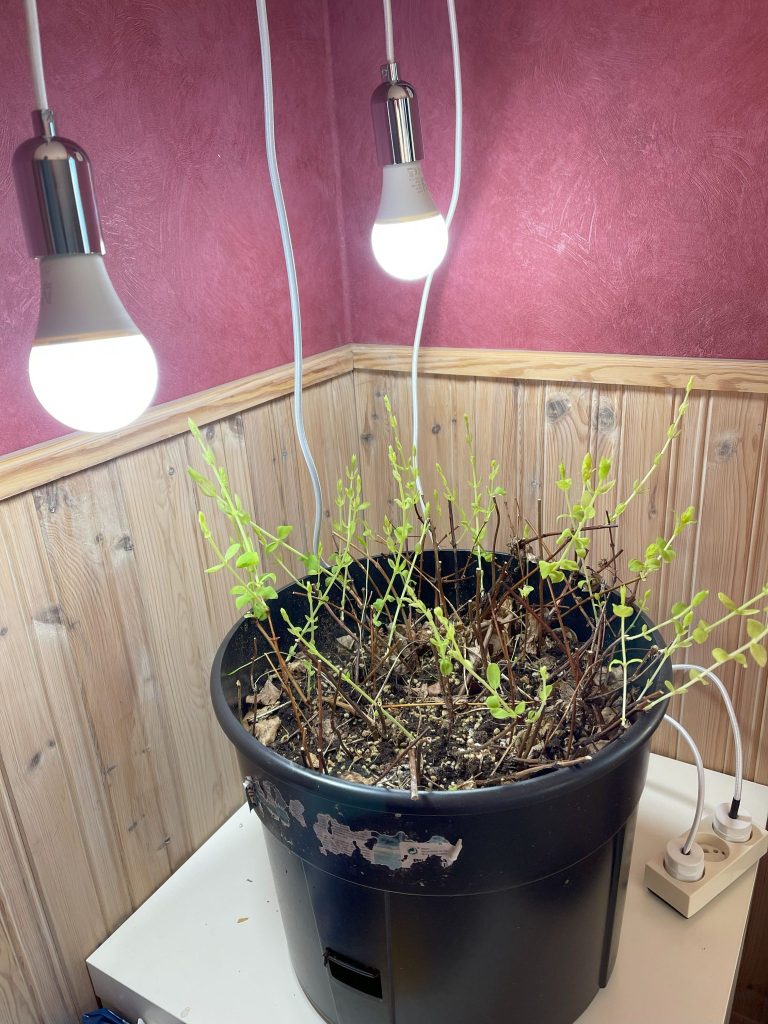
The solution required moving the Haskaps indoors, a step not commonly taken with these typically outdoor plants. It was crucial to mimic their natural conditions as much as possible to prevent the stress of an abrupt environmental change. I settled on a gradual transition, starting with the cooler environment of the basement to gently acclimate the plants before eventually moving them to the warmth of the living room.
This careful relocation was more than a mere shift in physical location; it was a commitment to safeguarding the well-being of the Haskaps through a period of climatic uncertainty. The next section of our article will delve into the initial phase of this indoor adaptation, highlighting the resilience of the Haskaps and the importance of attentive care during unexpected weather events.
Emergency Measures: Relocating Haskaps Indoors
When the crisp air of late autumn unexpectedly surrendered to a premature winter chill, the well-being of my potted Haskap plants became a pressing concern. With the ground outside hardening and the forecast bleak, it was clear that leaving the young plants exposed to the elements could result in a frozen fate for their still-tender roots.
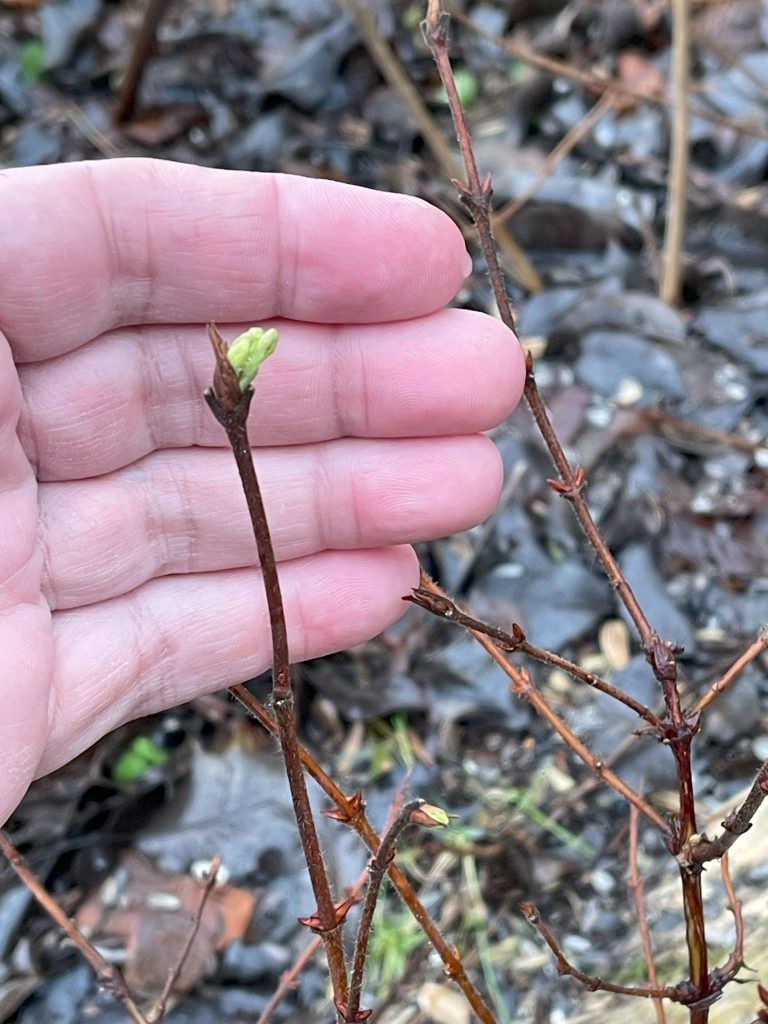
The Haskaps had been basking in the waning warmth of fall, flourishing from the cuttings rooted in the summer. This growth, however, was now under threat. Haskaps, while known for their cold hardiness, are not immune to the dangers of a sudden freeze, particularly when not established in the ground.
To preempt the damage, I opted to bring the Haskaps inside, to the refuge of our home. It was a decision made from a place of caution and responsibility. The basement, with its cool and stable temperature, provided a temporary safe haven for the plants to begin their acclimation away from the harsh outdoor environment.
After a week it became clear that the basement’s chill was only a temporary solution as it wasn’t cold enough to keep them dormant, they woke up. The plants needed more light and a carefully controlled environment to continue their growth. Thus, I introduced them to their next phase of winter care—a well-lit living room, where the presence of grow lights awaited to simulate the sun’s nurturing embrace.
Indoor Sprouting: A Sign of Resilience
When I moved the Haskap plants to the basement, I honestly thought they’d just sit tight until spring. Imagine my surprise when, within a week, they started sprouting new green leaves! I didn’t expect that it would break dormancy so quickly. These little guys were showing me they weren’t just tough; they were ready to keep growing, regardless of being indoors.
Seeing those new leaves felt like a small victory. It was like the plants were telling me they could handle this change. It reminded me of how important it is to be flexible, both in gardening and in life. Sometimes, you just have to roll with what comes your way.
But soon enough, it became clear that the basement light wasn’t going to cut it. The plants were growing, sure, but they needed more light, something closer to what they’d get outside. That’s when I decided to move them up to our living room and set up a couple of grow lights.
The living room became their new little sunlit spot. I placed the grow lights right above them, trying to get that angle just right, like the summer sun they were missing. It was amazing to watch them reach up towards the light, growing taller and sprouting more leaves. It felt like they were lapping up every bit of that artificial sunshine.
Using grow lights was a bit of trial and error at first. I wanted to make sure the plants got enough light without overdoing it. It was all about finding that sweet spot, giving them a bit of what they’d have naturally, but indoors.
This whole experience has been quite the journey. Not only have I managed to keep these Haskaps alive through the winter, but they’re actually thriving. It goes to show how resilient these plants are and how a little flexibility and quick thinking in gardening can go a long way.
From Basement to Living Room: The Haskap’s Indoor Journey
The move from the basement to the living room marked a new chapter in the winter saga of my Haskap plants. After their surprising sprout in the basement’s dim light, it was clear they were craving more. They needed something that felt like the sun, and that’s where the grow lights came in.
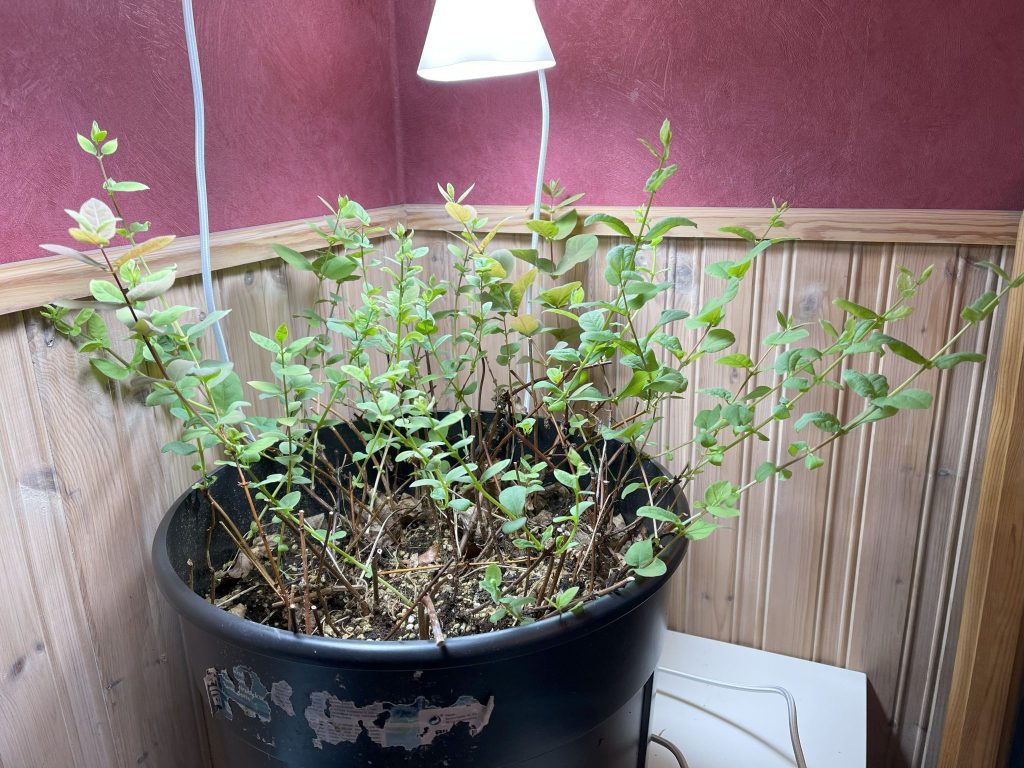
Setting up the grow lights was a bit like setting the stage. I wanted to create a spot that felt as close to their natural habitat as possible, minus the frosty temperatures outside. So, I arranged the lights to mimic the natural arc of the sun, adjusting the intensity to mirror the bright but gentle touch of daylight.
Watching the Haskaps under these lights was fascinating. It was like they knew what to do, instinctively reaching and growing towards this new source of life. Every day, I noticed small changes – a new leaf here, a bit more height there. It was a daily reminder of nature’s resilience and adaptability.
As the days passed, the Haskaps’ growth under these indoor conditions became more and more pronounced. They weren’t just surviving; they were thriving, in a way that I hadn’t fully anticipated. This part of their journey was a testament to their hardiness and a reflection of the care and attention that went into ensuring their well-being.
I don’t think I should bring them out for transplanting before April, so that is a solid 3 months of indoor growth. I wonder how tall they’ll be by then. Will update this article when I do.
Adapting to Indoor Growth: Light and Temperature Management
When I first set up the grow lights in our living room, I wasn’t exactly sure how the Haskaps would react. I knew these plants were tough, but indoor lighting was a whole new ballgame for them. The goal was to create a sort of mini-sun inside our home, something to mimic the natural light they were missing out on.
The first few days were all about observation and tweaks. How long should the lights stay on? Was the distance right? I didn’t want to scorch the plants or leave them wanting more light. It was a bit like Goldilocks trying to find just the right conditions. And honestly, it felt great to see my efforts paying off as the plants responded positively, growing steadily under the warm glow of the lights. The grow lights are LED and the cover that I put on doesn’t get really warm. I can pull them further up when needed and I have done so once so far, but there is still more room if they grow really tall.
The most rewarding part was seeing the new growth. Each new leaf was like a little victory, a sign that the Haskaps were more than just surviving—they were thriving. This growth wasn’t just good for the plants; it was a morale booster for me too. It showed that with a bit of ingenuity and a lot of care, you can create a thriving garden space, even indoors.
In the process of transitioning the Haskaps to an indoor environment, I closely monitored and adjusted the light and temperature, a crucial step for their adaptation. Similar challenges and solutions for winter gardening are detailed in our article ‘Winter-Resilient Plants for Sunken Hugelkultur Beds‘, which discusses how to manage soil temperature and maximize light exposure during the colder months.
Linking Indoor Care to Successful Propagation
The remarkable indoor journey of my Haskap plants didn’t start in the living room under grow lights; it began months earlier with their propagation. The health and vigor they displayed indoors were in many ways a reflection of the care and attention they received right from the start.
Propagating Haskaps, as I’ve learned, isn’t just about getting them to root and grow. It’s about setting a foundation for strong, resilient plants capable of adapting to a variety of conditions. This became abundantly clear as I watched my Haskaps thrive indoors, a setting I never initially intended for them.
As I tended to the plants under the grow lights, I often thought back to the early days when the cuttings were just taking root. The success of those early stages, where I ensured they had the right mix of soil, moisture, and light, undoubtedly played a role in how well they adapted to their unexpected indoor environment.
This experience has reinforced a valuable lesson: the care you put into propagating plants sets the stage for their future growth, no matter where they end up growing. Good propagation practices don’t just affect a plant’s ability to grow; they influence its resilience, its adaptability, and its overall health.
For fellow gardeners who might face similar situations with early frosts or other unforeseen gardening challenges, the message is clear: start with strong propagation, and you’ll have plants that can withstand a lot more than you might expect. It’s a testament to the idea that good gardening starts from the ground up—or in this case, from the cutting up.
The success of these Haskap plants under indoor conditions can be traced back to their initial propagation, as detailed in our guide ‘Haskap Propagation Made Easy‘. Proper early care sets a foundation for a plant’s resilience. Oh and incase you wonder if Haskaps are hard to propagate, I have found that they are really easy.
Conclusion
As I reflect on the unexpected winter journey with my Haskap plants, several key insights stand out, lessons that extend beyond the realm of gardening into the broader scope of nurturing and resilience. This experience was more than just a test of my gardening skills; it was a profound reminder of nature’s incredible adaptability and the importance of thoughtful, proactive care.
Firstly, the resilience of the Haskaps, thriving under grow lights in a setting far removed from their natural habitat, underscores a fundamental truth about gardening: adaptability is key. Just as the plants adapted to their new environment, I learned to adapt my care techniques, finding new ways to provide for their needs. This adaptability is a powerful tool, one that every gardener should cultivate.
Secondly, the success of this indoor venture can be traced back to the early stages of propagation. The effort and attention to detail during those initial stages paid off in ways I couldn’t have predicted. This reinforces the idea that the foundations we lay in our gardens are critical. Strong beginnings lead to robust growth, no matter where the plants end up.
Lastly, this journey with the Haskaps has been a testament to the joy and surprises that gardening can bring. Despite the challenges, or perhaps because of them, the satisfaction of seeing these plants not just survive but thrive has been immensely rewarding. It’s a reminder that gardening is a journey of discovery, filled with learning and unexpected turns.
As fellow gardeners, we often find ourselves at the mercy of the elements, but it’s our response to these challenges that shapes our gardens and ourselves. The story of these Haskaps, from their early propagation to their winter growth indoors, is a story of resilience, adaptability, and the enduring beauty of nature. It’s a story I hope inspires and informs, offering insights into the resilient world of Haskaps and the endless possibilities in the art of gardening.

